In addition to photographing weddings all year in the Tampa bay area, I also travel quite a bit and teach photography. I’m a member of the Professional Photographers Association of America, the second oldest professional organization in the country (150 years!) with over 30,000 members. A big part of the PPA’s mission is education and we are always working to raise the level of quality in the world of photography. So, this article is going to have a lot of photographer-related content but it’s also a great way for anyone who is looking for a wedding photographer to understand the difference between a natural-light photographer and one who uses flash.
Natural Light Wedding Photography On The Beach
Natural light photography is exactly what it sounds like: Natural light. Some of the best light in the world occurs naturally and a photographer who knows how to recognize it and use it can do amazing things. The down side is that it comes with huge restrictions: You can’t decide where it comes from (light direction), you can’t decide if it will be harsh or soft, you can’t guarantee it will be consistent. Still, there are so many times during a beach wedding where it’s the best choice. Here are a couple of tips to keep in mind:
Time-of-Day is the biggest factor
Generally, the closer you are to sunrise or sunset the better off you will be. Direct sunlight coming from straight overhead produces horrible light, deep shadows in the eyes and makes people squint. Right before sunset (the golden hour) is generally the best time. You have to learn to see light in a different way than before you were a photographer. When you look at someone standing outside, your eyes are constantly adjusting to the light. So, even if half their face is in shadow, you don’t really register it. Your eyes adjust for the shadow part when you look there and adjust for the light part when you look there…. but a camera can’t do that. It can only adjust for one or the other. So, you have to learn to see as the camera sees and recognize the limitations of the equipment. Eventually, you won’t be able to “not” see it. I have a bad habit of stopping total strangers when they are about to take a picture because I can see that the faces will be dark and the image would be so much better if they just turned. You have to always be aware if the background is brighter than the subject’s face, because that means the background will “blow out.”
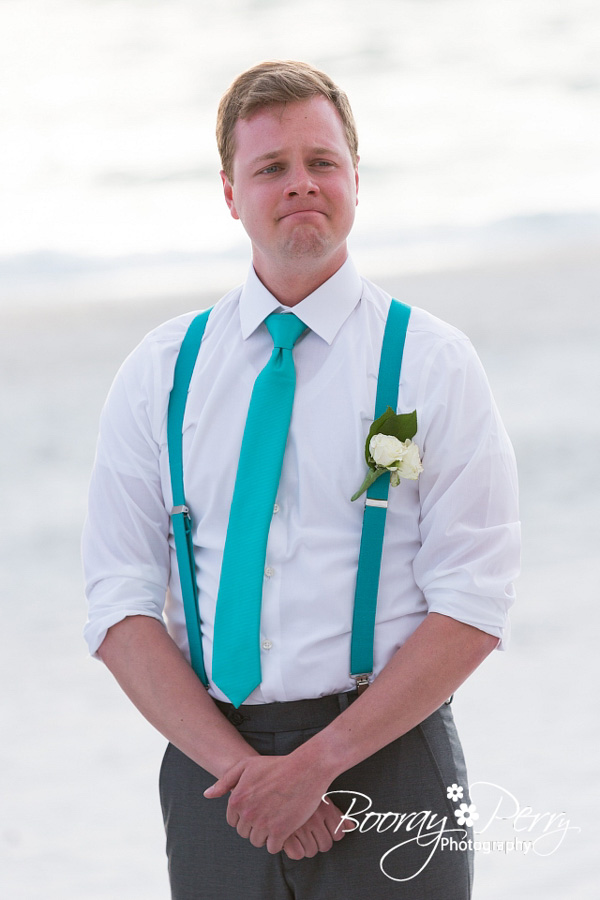
The light is behind my subject and so his face is in shadow. Proper exposure on his face means the background will over-expose and “blow out.” This is okay in some instances, like here where I really want to isolate him anyway
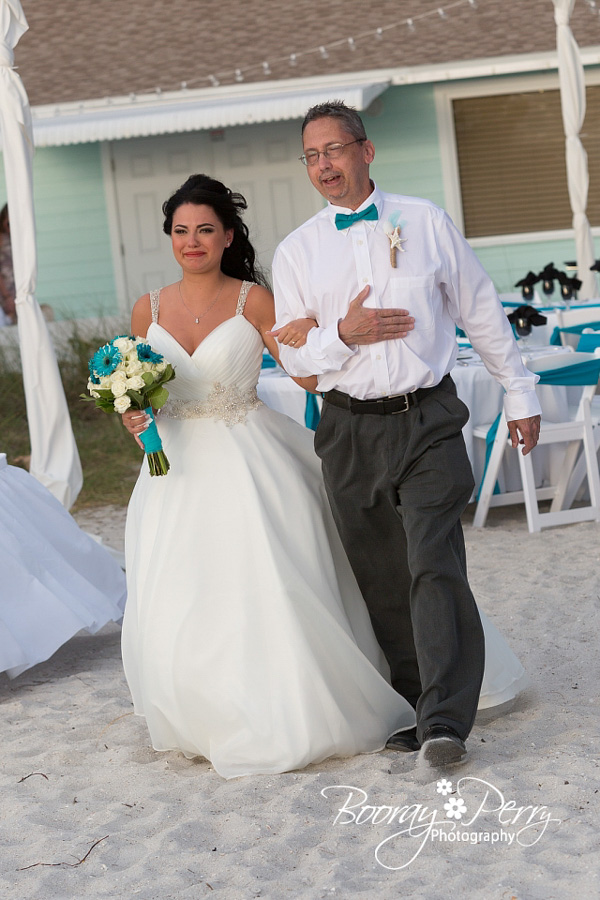
Here’s the same wedding, only now I’m facing the other way and the light is coming straight at my subjects face. Notice how now the background is not blown out?
Clouds are your best friend
Oh my God I love a cloudy day. With light, the bigger (wider) the source the better. The sun is huge but relative to us it’s a pretty small dot in the sky. But, cover it with clouds and now the whole sky is your light source and you get great, soft light.
Understand light direction
You have to be able to figure out where the light is coming from and how to best place your subject in that light. This is crucial anytime you don’t have great cloud cover.
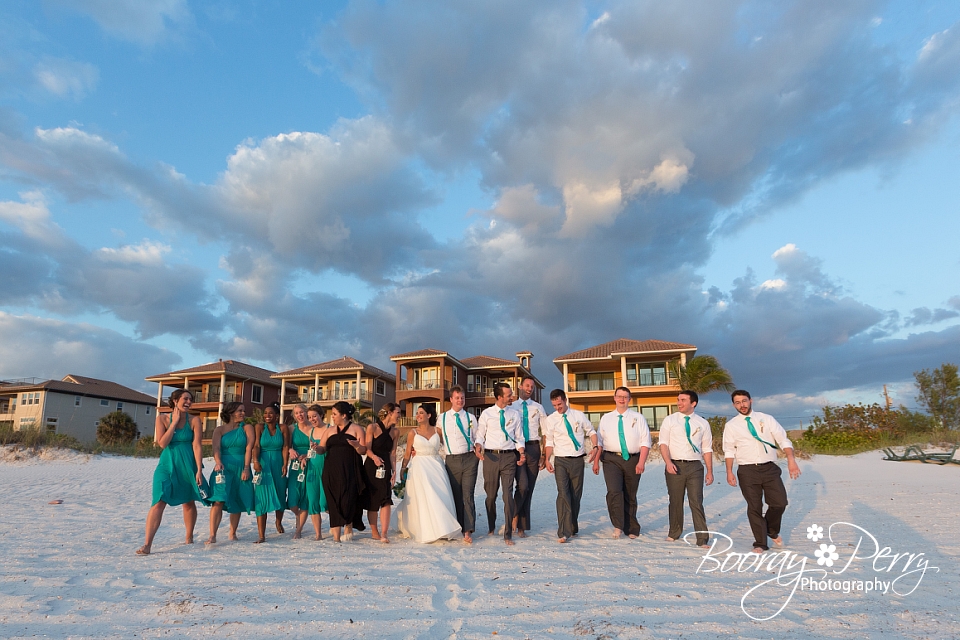
For this picture, I would have loved to put everyone with the ocean at their back. But that would have meant the sun would be behind them and everything would blow out but their faces. Better to shoot from the other angle so that they are lit by the sun

See the shadow on her neck? That tells you where the light is at. Ideally, you want the light to hit the face from a 45 degree angle so that you get a shadow on the side of the head. See how the shadow starts on her cheek? This contrast between light and shadow is what gives an image a 3-dimensional quality
Flash Wedding Photography On The Beach
The first rule of flash photography is knowing when to use flash photography. You will find many photographers who look down with disgust at people who claim to only be “natural light” photographers. Meanwhile, there are natural light shooters creating some amazing work. The truth is that both sides need to take some lessons from the other. Flash photographers need to learn that sometimes, natural light is just better… and natural light people need to realize that sometimes you just need a flash. I think the problem is that flash photography is harder and so the people who master it tend to look down on the folks who just can’t be bothered. Personally, I think that shooting all natural light portraits is fine because you have the luxury of time and you can always move locations or re-schedule for another day. But weddings, especially beach weddings in Clearwater, Treasure Island, etc… you should be prepared to work with whatever you have and use flash when needed. I’m just the sort of guy who doesn’t like limitations. I want to have every tool at my disposal.
Recognize When You Need A Flash On The Beach
As I mentioned before, you have to learn to “see” the light. You have to be able to recognize when the background is brighter than your subject and know how to light them.
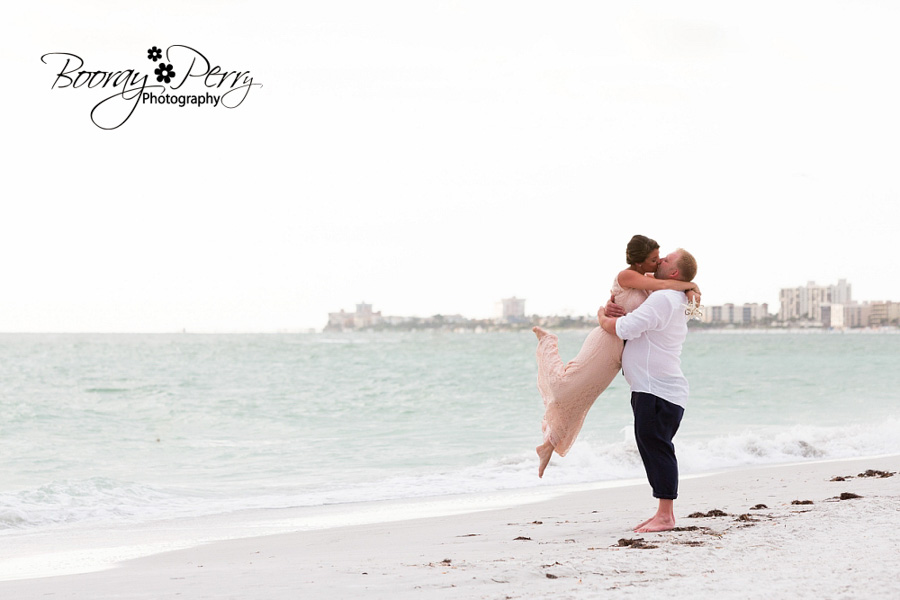
See how the sky is all white? That’s because the sky is brighter than the people. If the sky is exposed properly, the people will be dark. In this case, it’s okay because the people are small in the frame and you can’t see their faces. They aren’t looking at the camera. It’s a “candid” picture so it needs to look more natural.

Here’s the same sky as before. Now I want everyone’s face to be lit well so I use flash to eliminate the shadows. Because I use flash, I can now expose for the sky and show the clouds.
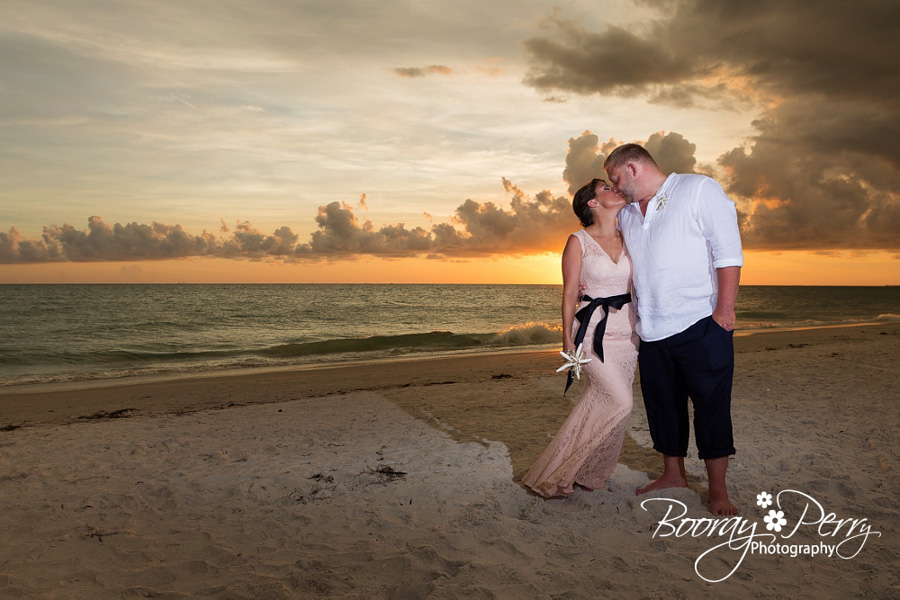
A few minutes later the sun is setting and I really want the sky to look nice. Flash is a must here.
Sometimes Flash Is Good Even When You Have Natural Light
There are many times when you have the natural light working in your favor and you still want to use a flash. Even if the sun is cooperating, you will get a different look if you add just a little directional light. In a portrait studio, usually there are two lights: One light is directional, meaning it’s at a 45 degree angle to the side of the subject. The other light is “fill” and is usually pointed straight at the subject, typically from right over the photographers head. Sometimes on the beach you have good natural light but it’s all “fill,” meaning it’s coming at the subjects from right behind you. In this case, adding a directional light will give the image more dimension and make it pop.
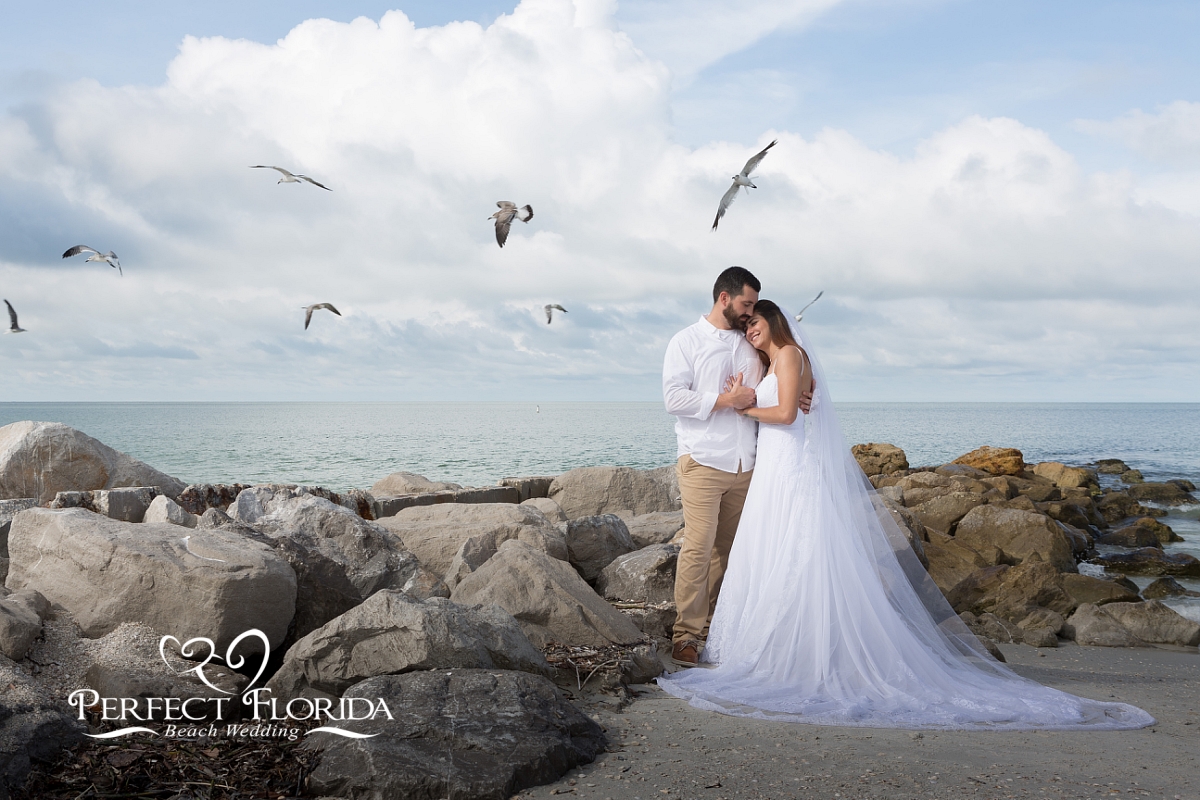
This was a morning wedding so the light was behind me. I could have just used the sunlight but the image would have been “flat.” So I added a flash to the side to get more dimension and eliminate shadows. Look at the darker part of her dress on the right. Without flash, their faces would look like that. The key is to add enough flash to matter but not so much that they don’t look naturally lit. If I didn’t tell you, would you know this was a flash picture?
Where To Put Your Flash At A Beach Wedding
This is probably the question that I get asked more than any other when I travel and teach. The trick to working with flash at a beach wedding is knowing where to but the subjects and where to put the flash. You always want to eliminate the sun as much as possible by putting it behind the couple or at a 45 degree angle behind them. Then you place the flash at a 45 degree angle in front of them. This is where many photographers fall short because this is where it get’s tricky. Understanding light placement is a trial and error process and can only be done quickly if you have done it hundreds of times.
Beach Wedding Photography Flash Tricks
The beauty of using a flash on the beach is that you can do so many things with it that you can’t do shooting only natural light. Remember: Direction is everything. Learning how to put the light in different places and create different looks will pay off in incredible images.
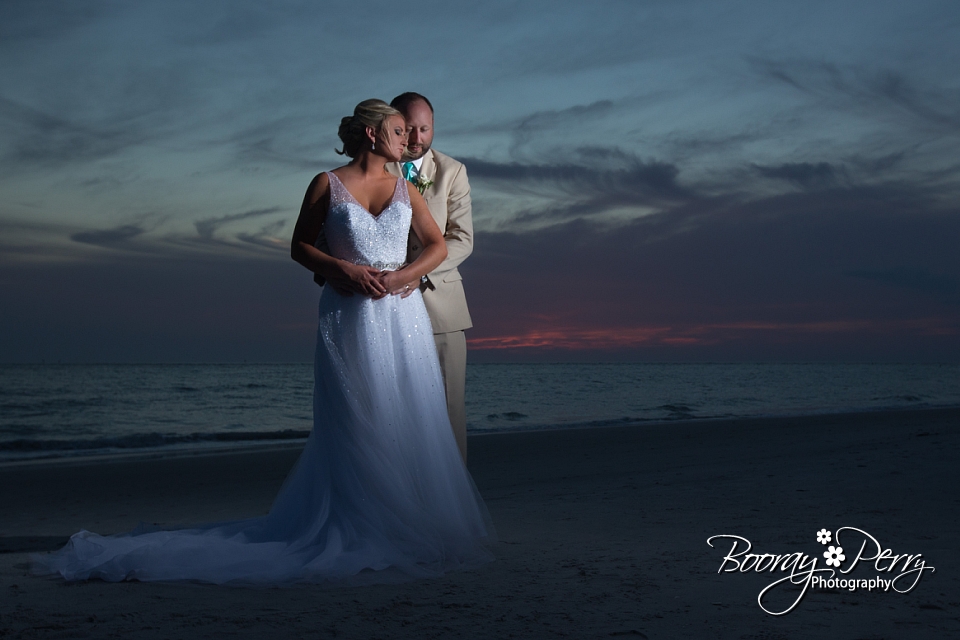
Here, I placed the light to the side for a more dramatic effect. This only works if you have the bride turn her face toward the light. Otherwise, she will have half her face in shadow.

Don’t be afraid to use your light to cheat a little. That’s not sunlight you see streaming through the couple…
In Conclusion
You just can’t go wrong by learning how to work with all kinds of light. Weddings move fast and you don’t have the luxury of waiting until things are better. Learn to see the light, position your subjects for the light and use flash to create fantastic beach wedding images.
